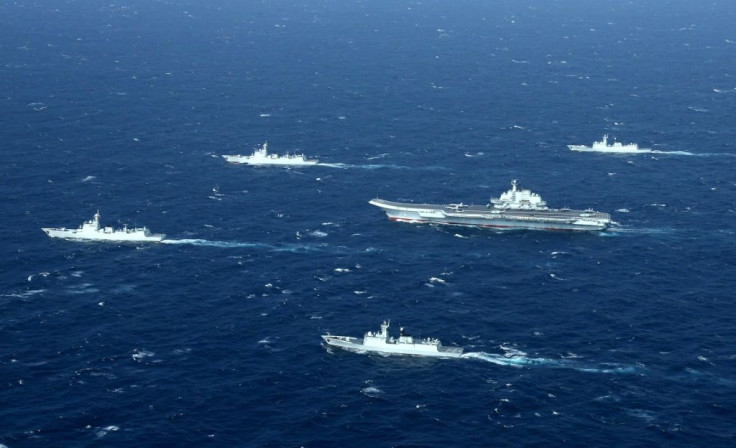Chinese Aircraft Carrier Moving Toward Taiwan Coast; Beijing's New War Strategy Revealed
KEY POINTS
- Liaoning is currently 160 nautical miles east of Taiwan in the Philippine Sea
- The drills hint that PLA might put pressure on Taiwan from the east
- China is said to be working on an anti-access and area denial (A2/AD) strategy
China's aircraft carrier Liaoning, which began its journey toward Western Pacific two weeks ago for military drills, is currently moving toward Taiwan's eastern coast.
Satellite images accessed by Planet Labs imagery show Liaoning and its escorts have again transited Miyako Strait again to move into waters east of Taiwan earlier this week. The carrier group is about 85 nautical miles south of Japan’s Yaeyama Islands and 160 nautical miles east of Taiwan in the Philippine Sea, reported The Drive, quoting image intelligence analyst Damien Symon.
Liaoning carrier strike group had reportedly spent the better part of two weeks operating in the East China Sea and was under the constant watch of Japanese Self-Defense Forces. Tokyo had claimed that PLA fighter jets and helicopters on the Liaoning conducted over 100 landings and take-offs in six days during the exercises.
Liaoning's current operations reportedly suggest that China will increasingly put Taiwan pressure from the east. This would include the "total encirclement" of the island and attack vectors from every direction. According to the analysts, China's new drills hint at their strategy, which aims to restrict other countries from acessing Taiwan during invasion.
The Chinese aircraft carrier Liaoning has spent the better part of two weeks operating in waters south of #Japan, flying more than 100 sorties in drills, a reminder of how #China will increasingly put #Taiwan at risk from the easthttps://t.co/5N2kSyoULb
— Damien Symon (@detresfa_) May 14, 2022
Malcolm Davis, a senior analyst specializing in Chinese security at the Australian Strategic Policy Institute, told South China Morning Post that the PLA was likely to be working on a military strategy known as anti-access and area denial (A2/AD). This aims to deter, delay and prevent external forces from occupying or crossing an area of land, sea or air.
"These drills certainly sound coordinated, and it would make sense to do anti-access and area denial, and test how different elements of their A2/AD network function together as a system of systems," he said.
“We should expect the PLA to continue to test different components of its A2/AD capabilities as these types of coordinated exercises make it easier for the Chinese to identify what works well, and what needs further development in preparation for any operations around and against Taiwan," added Davis.
The strategy of access denial is said to play an important role in any PLA action. This is likely to be done either by launching missiles, sending warplanes or groups of naval vessels. China had recently released two videos demonstrating air-launched and ship launched anti-ship ballistic missiles.
"This can be seen in the comprehensive modernization of China’s nuclear and conventional ballistic missiles – integrated air, missile and early-warning defense systems – [as well as] electronic and cyberwarfare capabilities, submarines, surface combat vessels and the introduction of the fourth and fifth generations of multi-role combat aircraft," Michael Raska, an assistant professor with the S. Rajaratnam School of International Studies at Singapore’s Nanyang Technological University, told the news outlet.
However, despite the drills hinting the A2/AD military technologies, China still has a long way to go before it is ready.

© Copyright IBTimes 2025. All rights reserved.





















